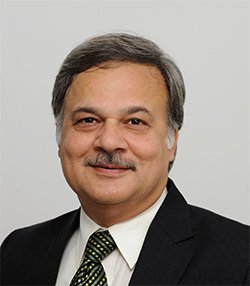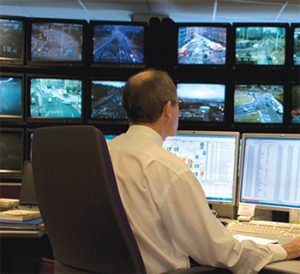 “ ‘Smartness’ may be defined as enhancing the accountability, dependability and service levels through ICT and AI – SCADA, smart metering, intelligent traffic signals, motion-sensored street lighting, 24X7 safety coverage through various forms of surveillance, and many more such features. Transport systems in the urban zone will be an integral part of this system, being monitored from the ‘Integrated Command and Control Centre’ that is structured for each Smart City”.
“ ‘Smartness’ may be defined as enhancing the accountability, dependability and service levels through ICT and AI – SCADA, smart metering, intelligent traffic signals, motion-sensored street lighting, 24X7 safety coverage through various forms of surveillance, and many more such features. Transport systems in the urban zone will be an integral part of this system, being monitored from the ‘Integrated Command and Control Centre’ that is structured for each Smart City”.
– Ashish Tandon
Integrating transport with other Smart City Components:
Once the challenges are clear, the issue that arises is: how can transport be seamlessly integrated with the other components of smart cities? There has to be a method to blend in the technology into the bigger picture for a longer duration. It cannot be done in a short-sighted manner.
 “The extensive infrastructure deployments across our cities and the financial investments which have been made over the years to pay for them, result in transportation systems offering a unique opportunity for the development of smart cities,” says Gollop. “It is probable that traffic installations, such as traffic signal controllers, will soon become data nodes for a variety of emerging highway-based technologies over the coming years, due to their connected status and distributed nature across the road network. An early example of this is the ‘Array of Things’ implementation in Chicago in the US, which incorporates a range of environmental and air quality sensors amongst other features. Because these units are relatively inexpensive, they can be placed regularly across the city, providing a level of insight which is not achievable with a handful of traditional monitoring stations”.
“The extensive infrastructure deployments across our cities and the financial investments which have been made over the years to pay for them, result in transportation systems offering a unique opportunity for the development of smart cities,” says Gollop. “It is probable that traffic installations, such as traffic signal controllers, will soon become data nodes for a variety of emerging highway-based technologies over the coming years, due to their connected status and distributed nature across the road network. An early example of this is the ‘Array of Things’ implementation in Chicago in the US, which incorporates a range of environmental and air quality sensors amongst other features. Because these units are relatively inexpensive, they can be placed regularly across the city, providing a level of insight which is not achievable with a handful of traditional monitoring stations”.
Gollop feels that “this type of implementation offers the flexibility to supplement sensor capabilities to include a broad range of reported parameters. Examples of these additional monitoring capabilities include ambient light and noise, vibration, water-level & pedestrian movements. To city authorities and utilities, this data could provide supporting information about a range of issues such as power outages, civil disturbances and flooding”. He asks, “So how can disparate data sources be brought together to influence and inform the operation of a smart city and offer a pathway for additional stakeholders to gain value from their use? Flexible traffic systems, such as the Urban Traffic Management and Control (UTMC) initiative, launched in the UK by the Department for Transport, use modular systems based on open standards to allow highway authorities to achieve their transport objectives without being constrained by ‘single source’ solutions. Commercial UTMC products, such as Osprey from Mott MacDonald, benefit from the experience gained from continual technological evolution implementing intelligent smart mobility applications by leveraging the advantages of open standards, allowing equipment and sub-systems from different suppliers to work effectively together. This type of platform offers a unique opportunity to underpin the formation of smart city implementations, by facilitating easy data exchange between different stakeholders to benefit the operation of the city”.
 TrafficInfraTech Magazine Linking People Places & Progress
TrafficInfraTech Magazine Linking People Places & Progress